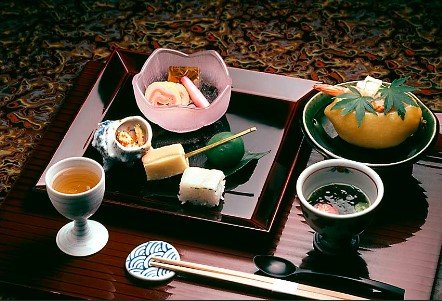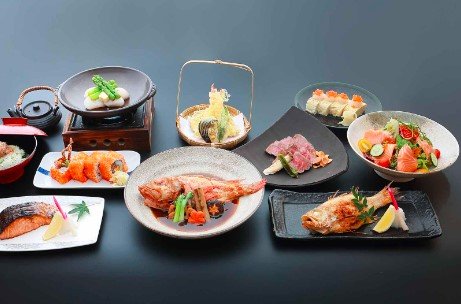Traditional Japanese Meal Preparation

Traditional Japanese meal preparation is an art that has been refined over centuries, embodying a deep respect for natural ingredients, seasonality, and meticulous craftsmanship. This culinary tradition, rooted in simplicity and harmony, emphasizes the balance of flavors, textures, and colors, reflecting the Japanese philosophy of food as a source of nourishment for both body and soul.

Understanding the Basics of Japanese Cuisine
Japanese cuisine, or washoku, is characterized by its emphasis on fresh, seasonal ingredients. Central to this cuisine is rice, which serves as the staple food. Alongside rice, a typical Japanese meal includes miso soup, pickled vegetables, and a variety of protein sources such as fish, tofu, or meats. The preparation of these dishes is guided by principles that prioritize natural flavors, minimal processing, and a visually appealing presentation.
The Role of Rice in Japanese Meals
Rice, or gohan, is more than just a side dish in Japanese meals; it is the heart of the meal. The preparation of rice is a ritual in itself. The grains are carefully washed, soaked, and then cooked to achieve the perfect texture—neither too sticky nor too dry. Once cooked, the rice is typically served in a small bowl and is often eaten with chopsticks. The importance of rice in Japanese culture is such that the word “gohan” also means “meal.”
The Art of Miso Soup
Miso soup is another essential component of traditional Japanese meals. Made from a fermented soybean paste called miso, the soup is prepared by dissolving the paste in dashi, a clear broth made from kelp and dried bonito flakes. The soup is then enriched with ingredients like tofu, seaweed, and green onions. Miso soup is not just a starter but a fundamental element that complements the rice and enhances the overall balance of the meal.
Preparing Sushi and Sashimi
Sushi and sashimi are iconic dishes in Japanese cuisine that showcase the culinary precision and artistry of Japanese chefs. Sushi involves combining vinegared rice with various ingredients, such as raw fish, vegetables, and seaweed. The preparation of sushi requires skill in selecting the freshest ingredients, as well as in the delicate art of rolling and shaping the rice and fillings.
Sashimi, on the other hand, is the presentation of raw fish sliced into thin pieces. The quality of sashimi depends heavily on the freshness of the fish and the skill of the chef in cutting the fish with precision. The fish is often served with soy sauce, wasabi, and garnishes such as shredded daikon radish and shiso leaves.
The Significance of Seasonal Ingredients
Seasonality is a cornerstone of Japanese cuisine. Chefs take great pride in selecting ingredients that are at their peak of freshness during a particular season. This practice, known as shun, ensures that the food is not only flavorful but also in harmony with nature’s cycles. For example, in spring, dishes might feature bamboo shoots and cherry blossoms, while autumn might bring chestnuts and matsutake mushrooms to the table.
Traditional Japanese Cooking Techniques
Japanese cooking techniques are focused on preserving the natural flavors of the ingredients. Steaming, simmering, grilling, and frying are common methods used in preparing Japanese dishes. Each technique is chosen carefully to enhance the taste and texture of the food. For instance, tempura, which involves deep-frying seafood or vegetables in a light batter, is cooked quickly at high temperatures to achieve a crispy exterior while maintaining the moisture and flavor of the ingredients.
The Aesthetic of Japanese Meal Presentation
Presentation plays a crucial role in Japanese cuisine. The concept of five colors—green, red, yellow, white, and black—is often used in meal preparation to create a visually appealing and nutritionally balanced dish. Food is arranged on the plate with an eye for aesthetics, reflecting the Japanese belief that one eats with the eyes first. This attention to detail extends to the choice of dishware, which is selected to complement the colors and textures of the food.
The Cultural Importance of Tea in Japanese Meals
Tea, particularly green tea, holds a special place in Japanese meal culture. It is often served at the end of a meal to aid digestion and cleanse the palate. The traditional tea ceremony, or chanoyu. This is a ritualistic preparation of matcha, a powdered green tea, and is an integral part of Japanese hospitality. The ceremony emphasizes mindfulness, respect, and the appreciation of the present moment, aligning with the broader principles of Japanese cuisine.
Conclusion
Traditional Japanese meal preparation is more than just cooking. It is a cultural expression that encompasses philosophy, art, and respect for nature. Every element, from the selection of seasonal ingredients to the precise techniques used in preparation and presentation. It’s all designed to create a harmonious and balanced experience. As you explore the world of Japanese cuisine, you will discover that it is a journey into the soul of Japan. Where food is not only nourishment but a celebration of life itself.



